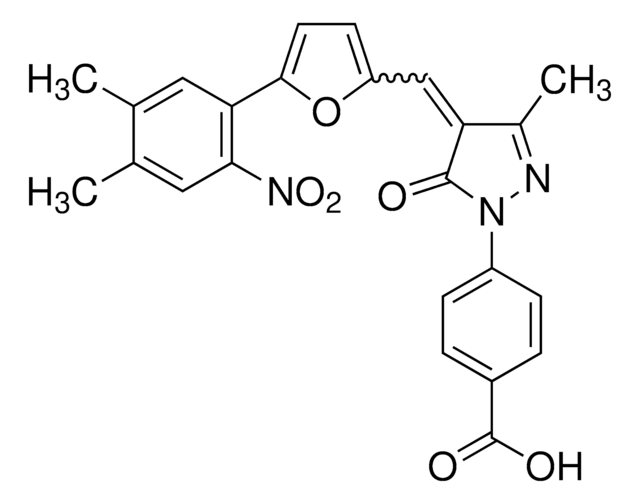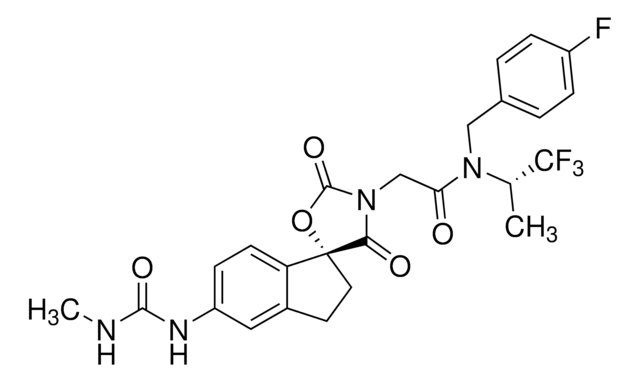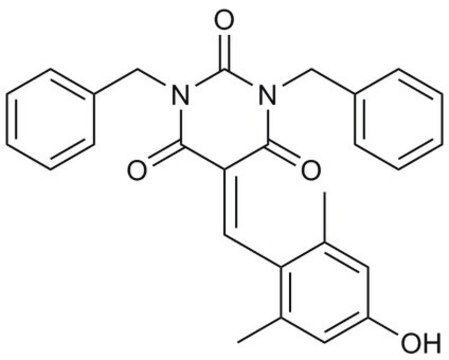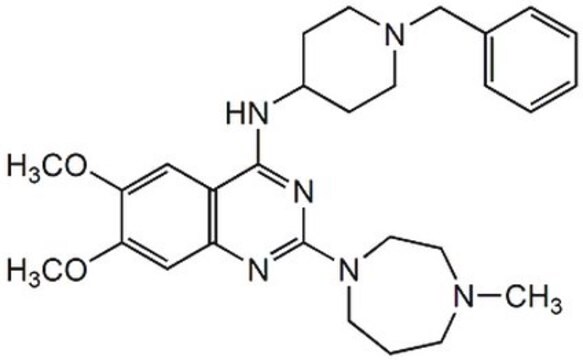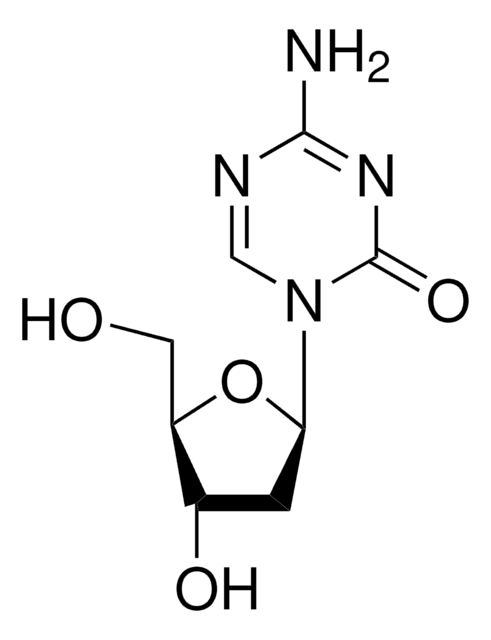382113
C646
≥99% (sum of isomers, HPLC), solid, histone acetyltransferase p300 inhibitor, Calbiochem®
Synonim(y):
kwas 4-(4-{[5-(4,5-dimetylo-2-nitrofenylo)furan-2-ylo]metylideno}-3-metylo-5-okso-4,5-dihydro-1H-pirazol-1-ylo)benzoesowy, inhibitor p300/CBP IV, inhibitor acetylotransferazy histonowej V, inhibitor HAT V
About This Item
Polecane produkty
Nazwa produktu
Histone Acetyltransferase p300 Inhibitor, C646, Histone Acetyltransferase p300 Inhibitor, C646, CAS 328968-36-1, is a cell-permeable, reversible inhibitor of p300/CBP HAT (Ki = 400 nM). Competes with acetyl-CoA for the p300 Lys-CoA binding pocket.
Poziom jakości
Próba
≥99% (sum of isomers, HPLC)
Formularz
solid
producent / nazwa handlowa
Calbiochem®
warunki przechowywania
OK to freeze
protect from light
kolor
brick red
rozpuszczalność
DMSO: 50 mg/mL
Warunki transportu
ambient
temp. przechowywania
−20°C
InChI
1S/C24H19N3O6/c1-13-10-20(21(27(31)32)11-14(13)2)22-9-8-18(33-22)12-19-15(3)25-26(23(19)28)17-6-4-16(5-7-17)24(29)30/h4-12H,1-3H3,(H,29,30)/b19-12-
Klucz InChI
HEKJYZZSCQBJGB-UNOMPAQXSA-N
Opis ogólny
Opakowanie
Ostrzeżenie
Rekonstytucja
Inne uwagi
Informacje prawne
Kod klasy składowania
11 - Combustible Solids
Klasa zagrożenia wodnego (WGK)
WGK 3
Temperatura zapłonu (°F)
Not applicable
Temperatura zapłonu (°C)
Not applicable
Certyfikaty analizy (CoA)
Poszukaj Certyfikaty analizy (CoA), wpisując numer partii/serii produktów. Numery serii i partii można znaleźć na etykiecie produktu po słowach „seria” lub „partia”.
Masz już ten produkt?
Dokumenty związane z niedawno zakupionymi produktami zostały zamieszczone w Bibliotece dokumentów.
Nasz zespół naukowców ma doświadczenie we wszystkich obszarach badań, w tym w naukach przyrodniczych, materiałoznawstwie, syntezie chemicznej, chromatografii, analityce i wielu innych dziedzinach.
Skontaktuj się z zespołem ds. pomocy technicznej